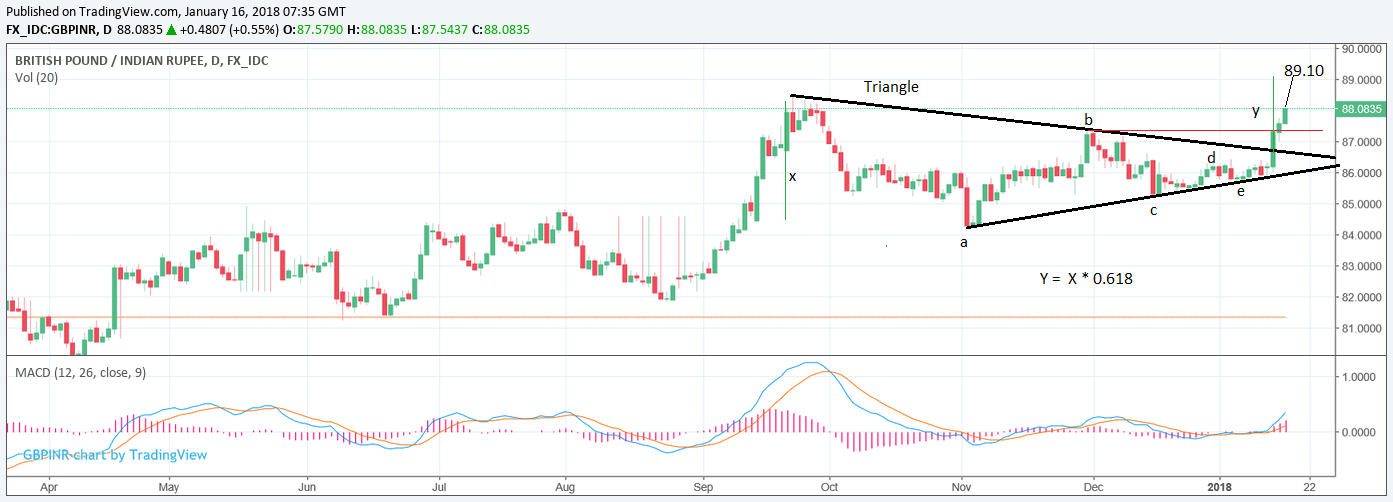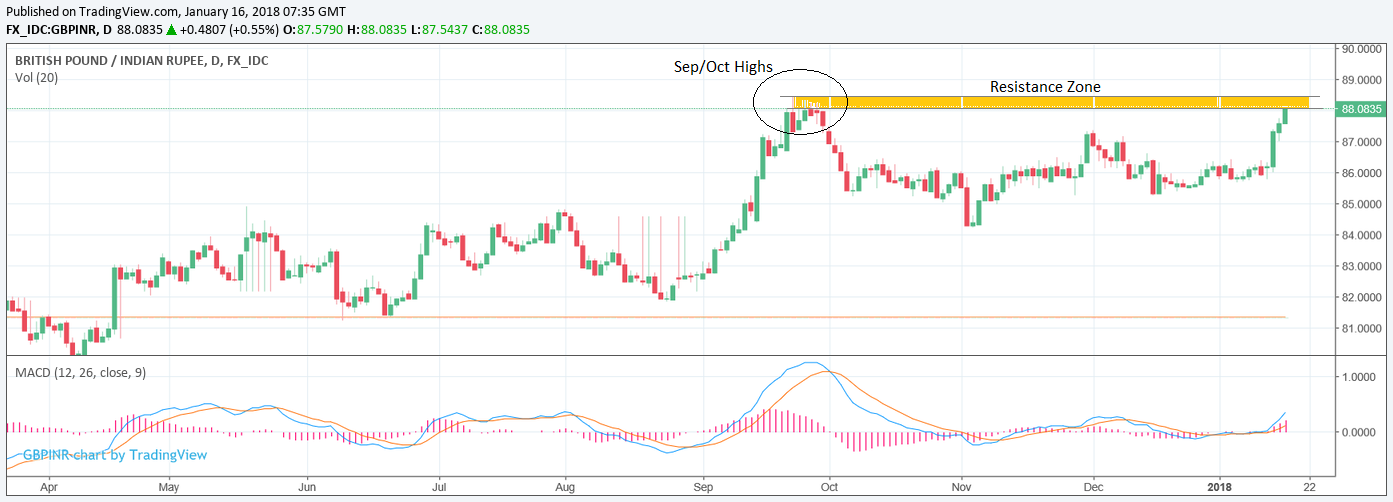Pound / Rupee hits Ceiling at Key 88.00 Level: What Happens Next?

The Pound has enjoyed a solid run against the Indian Rupee of late but now faces a key resistance level that could halt gains.
The Pound-to-Rupee exchange rate has surged higher following the release of key trade data from India overnight and more positive Sterling news around Brexit.
The pair is currently trading at 88.08 at about the same level as the late September/early October highs.
The going could tougher from here on up, however, as the old highs could create a a cieling for prices, or a major 'resistance level' as analysts call it, which could act as an obstacle to further gains.
Major highs and lows or peaks and troughs, often act as future levels of support and resistance because they become a focus for increases in supply and demand.
Traders come to expect pull-backs in the price at old highs and so they bet against the asset to profit, and vise-versa for lows, and this actually helps foster the subsequent reaction in price, which becomes a, sort of, 'self-fulfilling prophesy'.
Major highs and lows act as support and resistance due to a greater volume of old trades being liquidated at these levels, often by traders who got into the original move late, betting the market would go even higher or lower than it did, and who overcome by relief that the market has returned to their entry level, panic and liquidate to end even.
India's Trade Balance a Factor Behind INR Woes
Currencies tend to be sensitive to trade becuase people from different countries usually have to exchange them in order to trade with each other.
The recent surge in the Pound versus the Rupee appears to be partly due to data that showed India's trade balance widening substantially to -14.9bn in December from -13.8 in November - what's more everyone was expecting it to actually narrow to -12.4bn.
A wider trade deficit like India's means that it has been importing more goods than exporting.
In the case of India the main reason for this is that the price of oil has been rallying strongly and oil is one of its chief imports because it produces very little of its own, and is, therefore, relient on foreign imports for its energy needs.
So although India's exports rose healthily by 12.4% in December compared to a year ago, and this was due to "fading domestic drags" according to DBS Group economist Radikha Rau, which essentially means the domestic economy recovered from the growing pains of recent economic reforms, a greater rise in the import bills eclipsed it.
"Imports, meanwhile, jumped by a sharper 21% YoY from 20% in November on higher oil (35%) and gold purchases (72%). After three consecutive months of decline, interest in gold recovered notably, likely on better cash availability and at the margin, as an inflation hedge. Higher commodity prices continue to inflate the import bill, with the recent rally in global fuel prices particularly, to underpin this segment into Q1 2018," says Rau.
Where Next?
According to our week ahead forecast we actually see potential for the GBP/INR pair to rise even higher than its current 88.08 level.
Our view is based on the fact a chart pattern has formed, which is called a symmetrical triangle, and usually indicates a volatile breakout is expected.
The triangle is shown on the chart below and we note that the pair has now risen above the 87.50 confirmation at the 'b' wave highs for signalling a breakout.
According to technical theory, the breakout will probably extend the same length higher as the height of the pattern at its widest part, which we have labeled 'x', multiplied by 61.8%.
This leads to an end target of 89.10 (see below).

Get up to 5% more foreign exchange by using a specialist provider to get closer to the real market rate and avoid the gaping spreads charged by your bank when providing currency. Learn more here.







